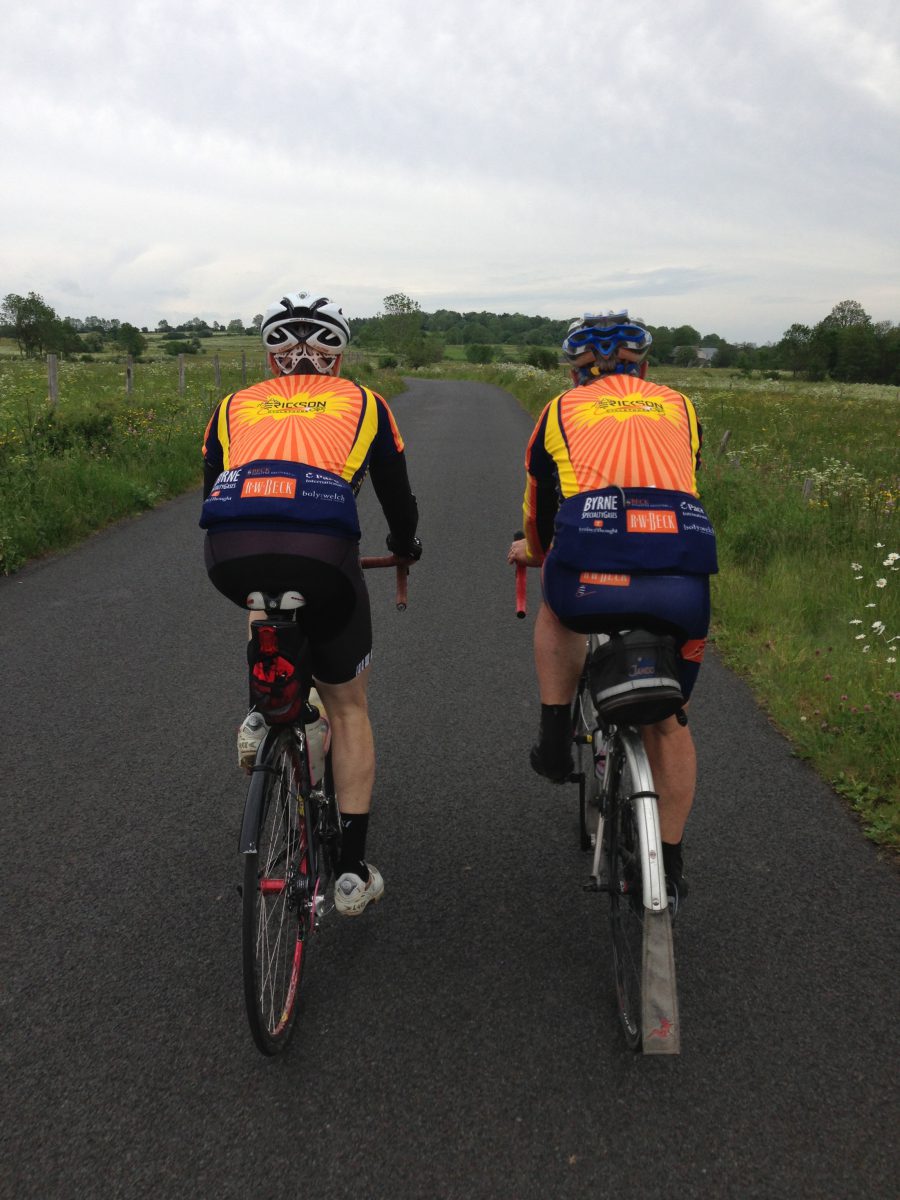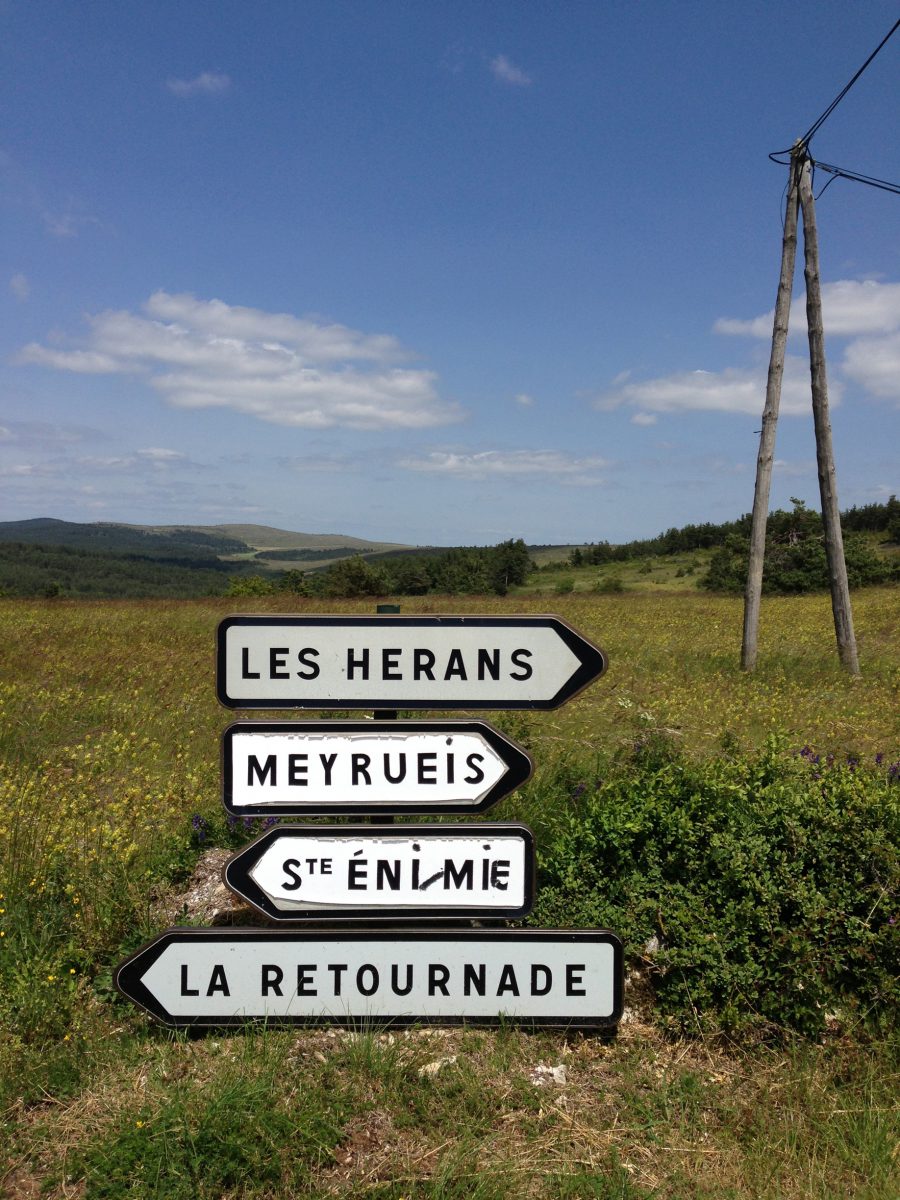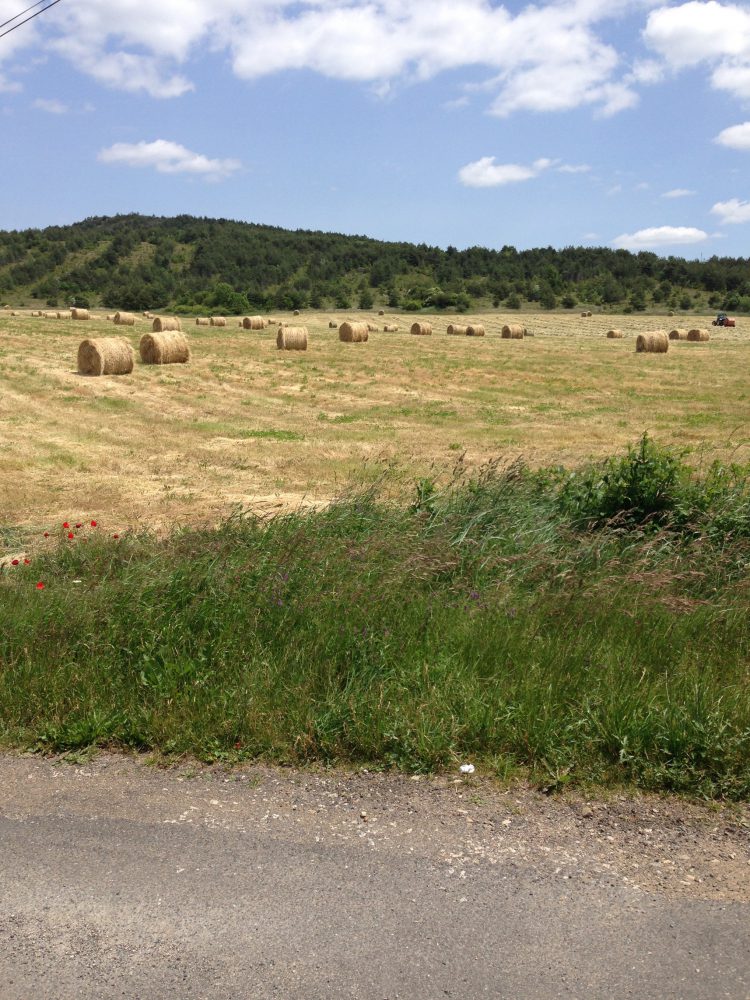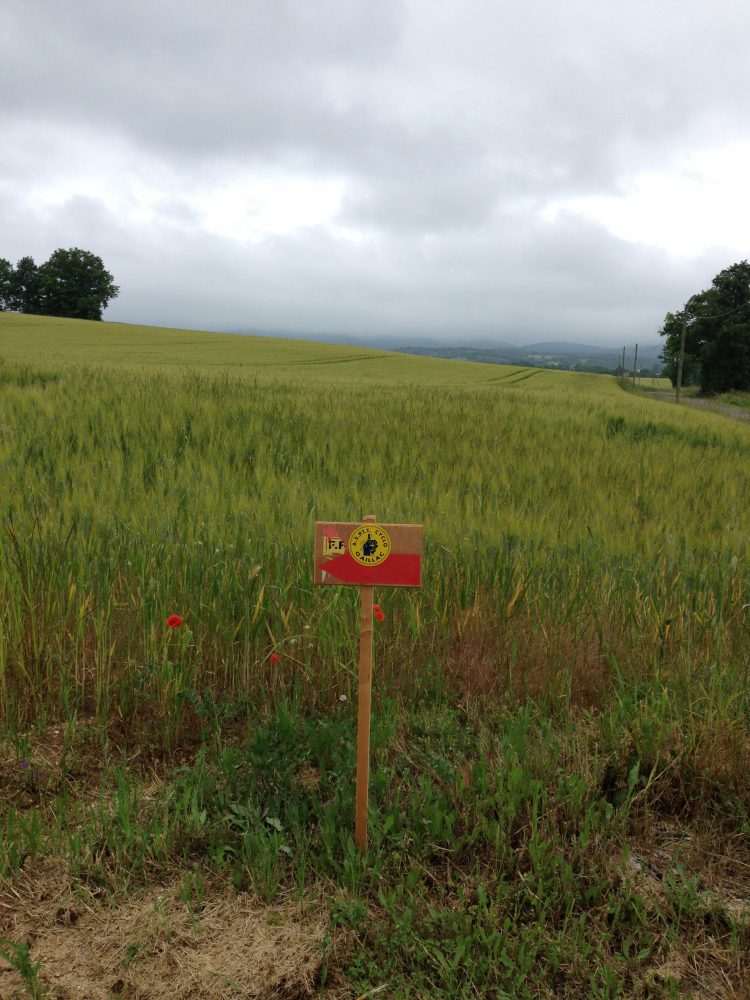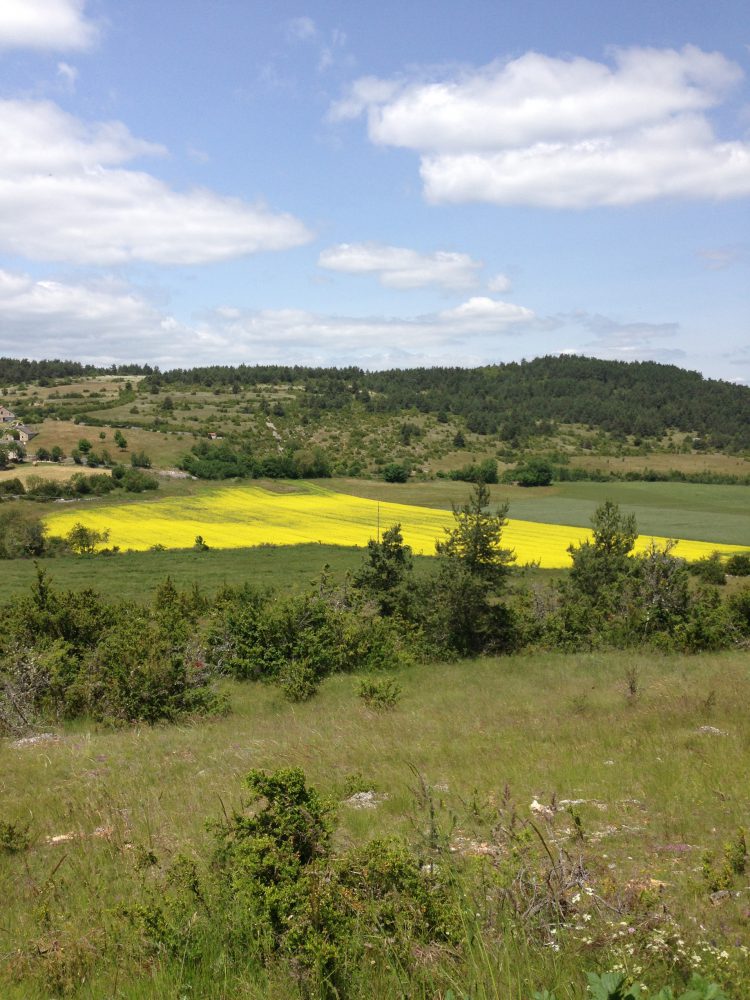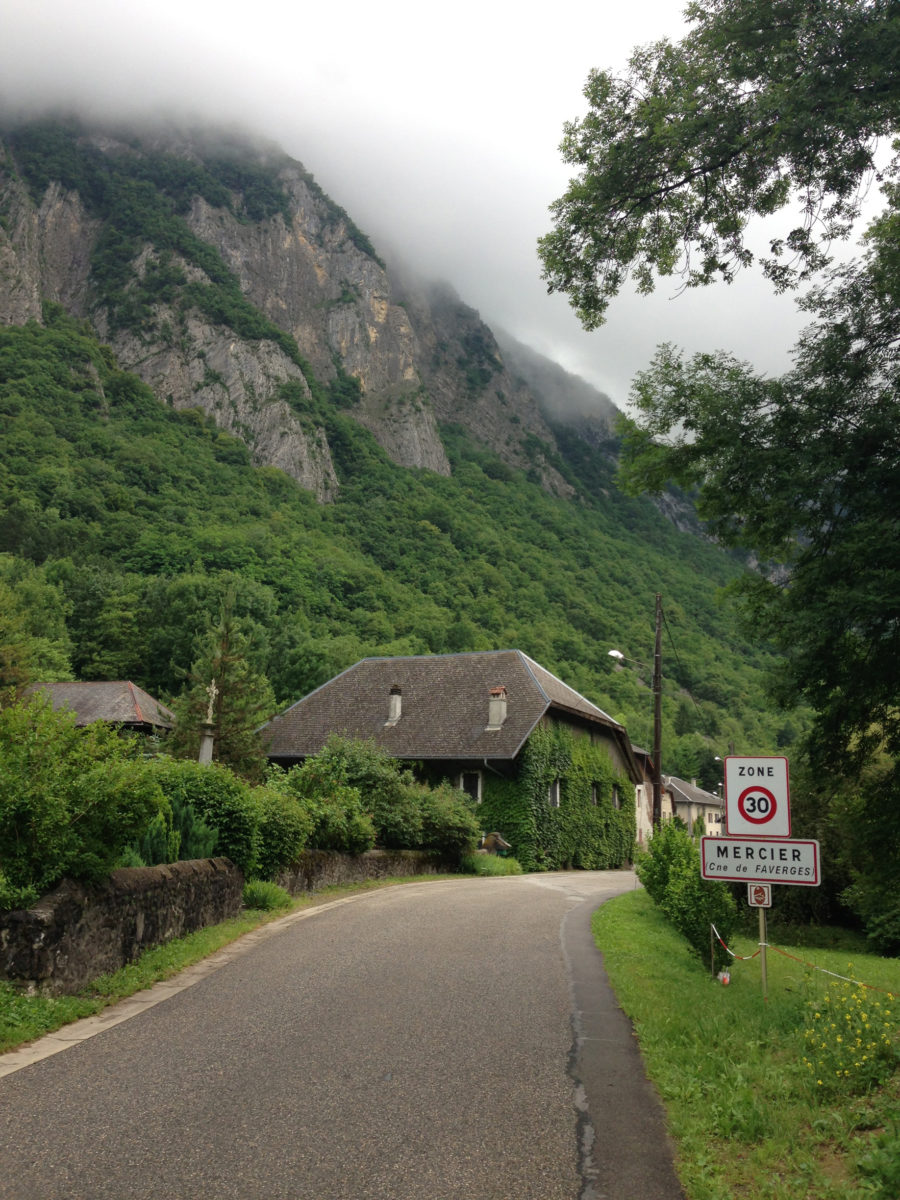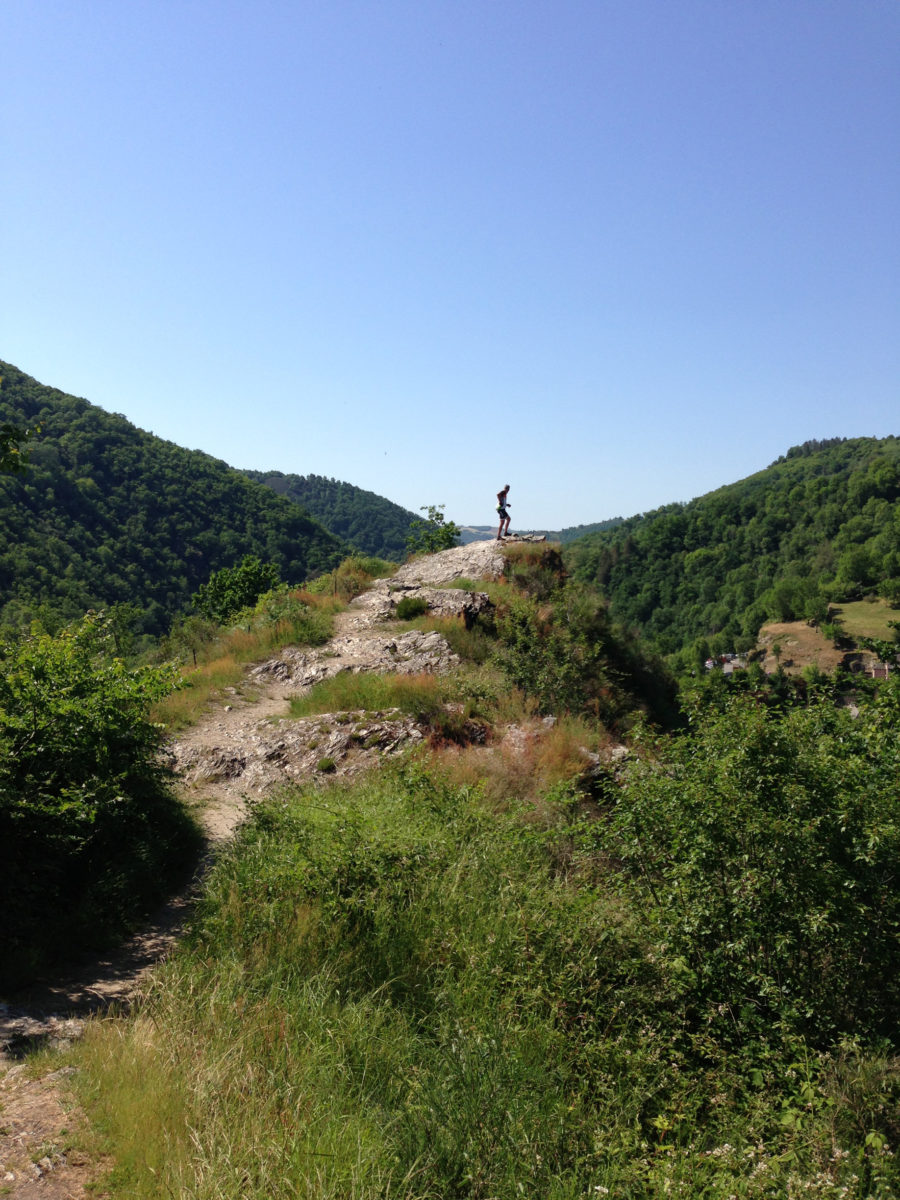Anyone with even a slight interest in cycling in France knows of the Alps and the Pyrenees, whose majestic climbs determine the champion of the Tour de France. However, most cyclists know very little of the other French mountainous region, the Massif Central. Outside of the occasional climb of the Puy Marie, the Tour de France usually passes through this region quickly with little mention of its grandeur. This remarkable, remote and rugged region is one of France’s best-kept secrets.
It is surprisingly little known beyond its sprinkling of spas, medieval castles, Romanesque churches and the occasional Renaissance palace. The Massif Central is the keystone of France, holding the country together by the sheer force of its grandeur.
The huge central plateau of ancient granite and volcanic rock that makes up the Massif Centrale embraces these dramatic landscapes. Strung with giant volcanoes, it is a region of unsuspected richness; from the spectacular towns of Le Puy-en-Velay, to the religious treasures of Conques, to the black rock buildings of Salers, it is full of beautiful surprises. With its crater lakes and hot springs, the lush volcanic terrain with its many conical cinder cones make for a unique visual experience. The entire region contains the largest concentration of extinct volcanoes in the world with approximately 450
volcanoes. It is the most rugged and geologically diverse region within France.
Equally important in describing this varied region are the myriad rivers that originate high in the mountains, cutting deep gorges on their way through the Massif Central. The Lot, Tarn, Aveyron, and the Ardeche with their steep rocky cliffs provide perches for some of Frances most beautiful villages. Of all the many secrets of the Massif Central, the most unsuspected is the food. Some of France’s most famous chefs have come from this area. Perhaps the harshness of life in the rugged mountains created a need for something special to enrich the hard life, and inspired cooks to create a cuisine not only unique but excellent.
The Massif Central is so rich in things to see and experience, that it must be explored slowly and why not by bicycle or tandem? In a country considered to be the best cycling nation in the world, this area is understandably a favorite especially among the French ‘cyclotouristes’. It is a storybook land of mountains, green pastures, cliff side villages, gardens, winding rivers, blissfully empty roads, and wonderful food.
Itinerary
JUNE 11 – ALBI
Arrive Toulouse, France, by plane or train; we’ll meet you in our van and transport you to our hotel in Albi, a commute of just under an hour. Rich in historical and religious heritage, Albi is the principal city of the Tarn Départment and was listed in 2010 as part of UNESCO’s World Heritage. Situated on the River Tarn, is the perfect setting for the start of our tour of this beautiful region. We’ll gather tonight for our welcoming dinner and an overview of the tour.
JUNE 12 - NAJAC 45mi, 2700ft ELEVATION GAIN
This, our first day of cycling, will give us a chance to spin our legs while giving us a glimpse of what is ahead. A large part of our tour's riding will include flat, winding rivers, high meadows, along narrow roads from village to village, past farms with rock fences, and over the many (800-1000ft) hills to the next river valley. Today, the rivers are the Aveyron and its tributary, the Viaur. The route passes beneath the castle ruins of Penne before winding up the river for a relative flat 31 miles. The route then climbs up to Najac. It is a beautiful one-street town, situated on a narrow ridge, rising 600ft from the Aveyron River. The hotel at the center of the village is charming and friendly, and the evening meal is the first of many excellent dinners on tap for us.
JUNE 13 - CONQUES EN ROUERGUE 60mi, 4100FT or 65mi, 5600ft
The first 30k hardly raises a sweat as we cycle over a series of open pastured hills, past numerous farms and villages, with the occasional dip down to river with a short climb out. After a stop in
Colombies for pastries or sandwiches we descend to the Aveyron and the village of Belcastle on the Aveyron. This ancient stone village rises steeply from the quiet river to the well-preserved castle above – a perfect postcard vision. Small farming roads lead us along the wooded Gorges du Dourdou, then a short climb to our village of Conques. An option is to climb up into the hills above Conques, for not only a great photo shoot, but for a long gradual breathtakingly beautiful descent. Conques is an abbey town, rich in Romanesque architecture, and its Abbaye de Sainte Foy, is filled with some of France’s most precious religious treasures.
JUNE 14 - VÉZAC 61mi, 4000ft or 74mi, 4600ft
The morning ride will be very beautiful, but then this is a beautiful region. After a cruise down to the Lot River we will start climbing in earnest, as we ride up into the rolling hills of this high plateau. There are large patches of forest, but mostly we have meadows and pastures as far as the eye can see. The green grass and the beautiful fields of wild flowers are laced with stone fences. The hillsides are dotted with tiny hamlets, farm houses and small shepherds’ huts, not to mention an occasional castle. After dropping down to Maurs for lunch, we follow a small, winding river. At 2% this climb could be a tough one. Soon we are back on top of the high volcanic plateau, which is dominated by the volcano Puy Mary in the distance. Our ‘castle’ hotel in Vézac has grand views across the valley to the hills and mountains rising in the distance.
JUNE 15 – VÉZAC 61mi 3700ft or 63mi, 4300ft
A quick descent to the larger town of Aurillac brings us to the base of today’s climb up the Puy Mary - 24 miles of climbing and only 4000ft of elevation gain. The lava flows from this mountain were very liquid and flowed rapidly, forming long, gradually sloping ridges and valleys. The volcanic formations are strange and the lush greenery covering the mountain gives them an eerie appearance. From anywhere on the mountain views are amazing in all directions and once you are on top of the Pas de Peyrol, you are at the highest pass iin the Massif Central. Our route takes us up the Mandailles valley and traverses just below the summit of the Puy Mary, to the Pas de Peyrol. A nice long high-speed descent flanked by numerous volcanic peaks is followed by a climb into a high mountain valley—an incredible finish to a wonderful day. The long route only adds more amazing scenery to experience.
JUNE 16- LAGUIOLE 68mi, 46mi 4300ft
Out the door we start the day with a climb – at least it is gradual. Our first obstacle is the Prat de Bouc, a narrow pass on the side slopes of the Plomb du Cantal, the second highest volcano in the region at 6121 ft. After another couple easy passes, we have one of the most beautiful descents of the tour, arriving in Pierrefort for lunch and continuing down to the Gorges de la Truyère. The afternoon ride is quite idyllic, as we ride up through the farmlands and forests to Laguiole. Here is where the famous Laguiole knives are made. We’ll enjoy superb cuisine at our hotel, led by renown culinary expert, Michele Bras.
JUNE 17 - LAGUIOLE various short loops or 56mi 4000ft or 34mi, 2000ft
It might be a good time to take a day off but there are too many great roads to explore, so at least a short ride to spin the legs would be appropriate, come back early, have lunch and take a tour of the knife factory. The Gorges du Lot from Entraygues to Espalion is a great route; combine this with exploring some of the many small roads in the area, and you’ll still have time for a relaxing afternoon at the hotel.
JUNE 18 – MENDE 49mi, 3800ft or 63mi, 4700ft or 81mi, 6400ft
We start the day high on the plateau of the Aubrac, and stay high the entire morning, passing the occasional ancient volcano. There are no real mountains here but the terrain is hilly with lots of downhill. The people who live in this rural area are enduring and hard-working, with winters being harsh, cold and windy. However, we are here at the very best time of the year. The temperature will be great for cycling and the flowers will be out in all their splendor. The fields are dotted with huts, and connected by piled stone fences. Although this is not a tourist area, it will provide some of the best cycling scenery of the tour. Eventually we have an enjoyable, 2500 foot descent to Marvejols. After lunch we have an easy ride to the bustling town of Mende.
JUNE 19 -MENDE 43mi, 2500ft
We have been riding hard for six straight days, so a rest day might be the very best thing. The small town of Mende is beautifully situated in the Lot River valley. It is a great town to explore, with an extensive pedestrian walkway, plenty of shops, exquisite patisseries and restaurants. There is plenty of interesting architecture to browse, including the magnificent Cathedral of Notre Dame et Saint Privat. It is tempting to spend the entire day here, but as always, there is a good reason to get on your bike for some great riding. This area is covered with small undulating mountains, with constant up and down on small one-lane roads. Perhaps the best is the wonder Gorges of the Crueize river. We will spend the rest of the ride exploring many of these small roads as we cycle through meadows and forests, from farm to hamlet, finding almost no villages of any size and no traffic.
JUNE 20 – MEYRUEIS 46mi, 3300ft or 70mi, 4500ft
We are in the Parc National des Cévennes for the next few days. Not really a mountain chain, the Cévennes is more a land of big hills with a multitude of many-sided open spaces. The summits are made up of a succession of slightly undulating plateaus, sometimes green like the Mont Aigoual or markedly flat as on Mont Lozère. The Cevennes is a maze of deep valleys with winding rivers of clear waters and hill slopes covered in forests of sweet chestnut, along with mulberry bushes, planted in days gone by for feeding silkworms. Today we have a wonderful ride in store; soon after leaving the hotel we climb out of the Lot River valley to the top of a high plateau, the Causse Sauveterre. Here the road runs along the rolling plateau and then dives to the Tarn Valley. At Florac we follow the Tarnon River up the side of Mont Aigoual. This will be a fun ride with lots of good views. To our south is the looming Mont Aigoual. Enjoy the view now, because soon we climb it. The long route follows the Lot River up into the mountains, then descends to the Tarn River valley to Florac.
JUNE 21 OR 22 – MEYRUEIS Mont Aigoual loops: 36mi, 3500ft or 46mi, 5000ft
Borrowing from the writings of Tim Krabbé: ‘the Cévennes, in a remote and largely ignored part of the south of France, is a unique landscape for bicycle road racing. Riding here is beautiful but unremittingly hard. Geographically the area is defined by a series of spectacular deep gorges, separated by high plateaus. The climbs are steep and the ‘cols’ are often described as being ‘upside down’. You descend first into the gorges and then immediately start climbing. There is no relief at the summit, just a grind over the windswept ‘Causses’. Not surprisingly, this raw landscape is the scene for countless French races each season. In September 2007, four riders from the Rapha Condor team set out to ride the course of the Tour du Mont Aigoual, the race featured in the Tim Krabbé classic, ‘The Rider’. The 137 ku figure eight loop from Meyrueis takes in classic Cévennes terrain, with three major climbs, wicked descents and fast riding through the beautiful gorges of the Jonte and Tarn rivers. Their challenge was to ride the route faster than the winner of the race in ‘The Rider’, 4 hours and 30 minutes’
We do not expect anyone to come close to that, so just enjoy the ride because it is one beautiful cycling adventure. There are many options for riding this mountain, as well as an option to not climb Mont Aigoual: The Causse Noir is the high plateau above Meyrueis; not only are there great views but also some extraordinary fun riding. The Chaos de Montpellier le Vieux has some amazing rock formations and as couple restaurants to enjoy the view.
JUNE 23 - SALLES CURAN (St Martin des Faux) 58mi, 3000ft or 71mi, 4100ft
Our morning route takes us up the wooded hillside of Mont Aigoual, for about 1000 feet of warm up climbing. We then head down the gorges du Treveze and the Canyon de la Dourbie. This area is sparsely populated and fairly rugged, with only a few cliff-side villages along the way. We continue down river to Millau, which is framed in the distance by the world's highest bridge, the towering Viaduct de Millau. After lunch in Millau, there is more downriver riding' finally when we reach St Rome after 44 miles of mostly gradual descending, do we have a climb of any significance. We finally make up for our easy morning with a climb up to the Plateau du Levezou, 2300 feet of climbing in 11 short miles. However, this is a long day and we will all be tired long before arriving at our country hotel.
JUNE 24 – ALBI 48mi, 3000ft
This is our last day of cycling, and after all we have seen and done, today may seem somewhat anticlimactic. Just another scenic road connecting pretty villages - but at home this would be your most special route! Starting at the highest point on today’s ride will help speed us along on this all too soon, last day of riding. This is a good day to get back to find one of those wonderful French restaurants and enjoy one final gourmet lunch. We’ll have plenty of time to pack up and have a beer before our farewell dinner tonight.
JUNE 25 – DEPARTURE
Van transportation is provided to the Toulouse airport for your flight home.

